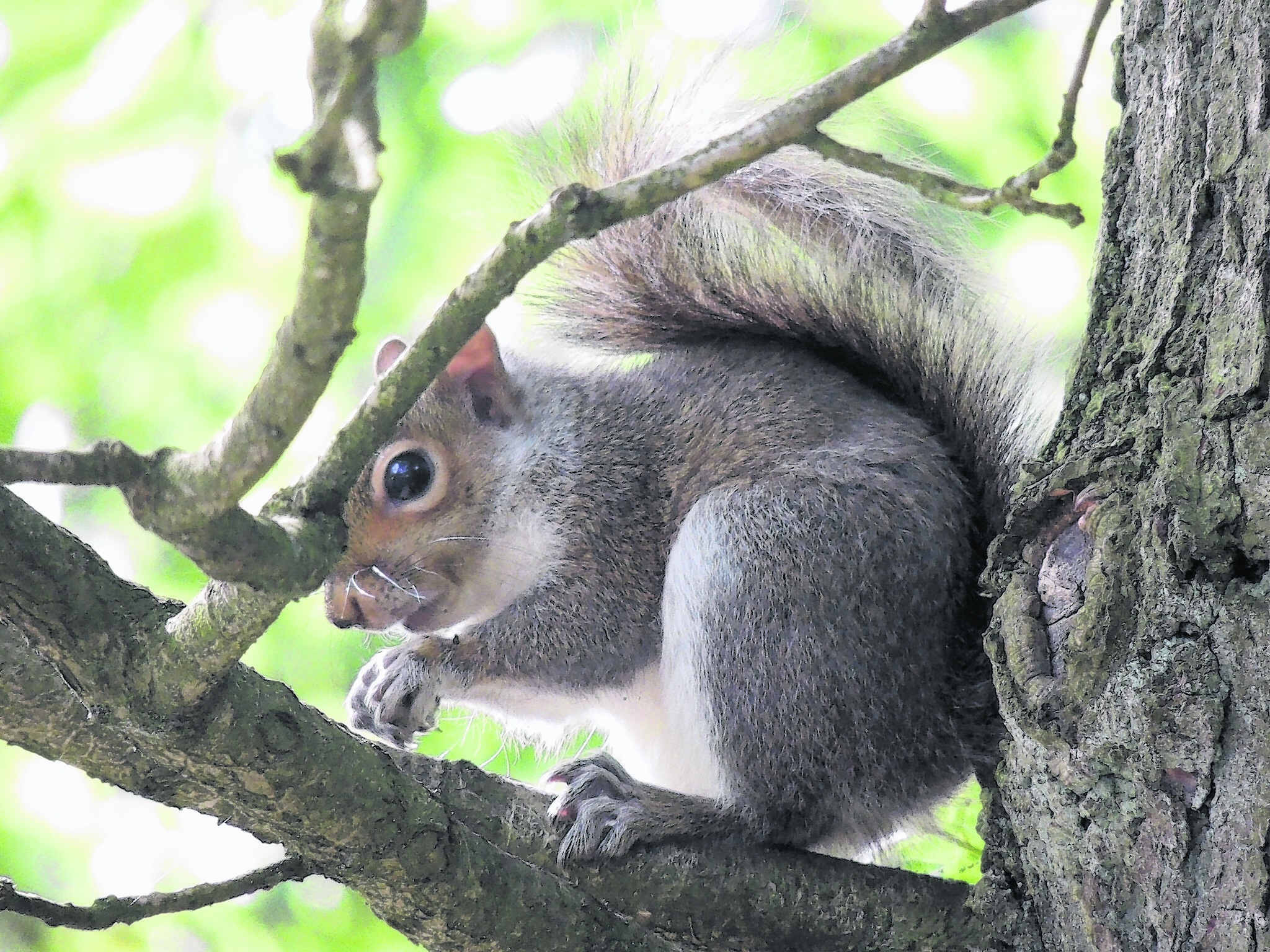As a new book from gardening writer and blogger Anne Wareham looks at how to help gardeners deter squirrels and other pests, Hannah Stephenson offers some of her own solutions to stop them in their tracks.
Some of my prize spring bulbs simply haven’t appeared this year, including tulips and crocuses, which I planted in the autumn. The culprits? Grey squirrels.
While non-gardeners may delight at the sight of these cute-looking mammals, gardeners despair of them. They steal food from bird tables, dig up bulbs and corms, seem to be able to get through the most impenetrable “squirrel-proof” bird feeders and eat copious amounts of peanuts and seeds intended for our feathered friends.
Squirrels will also destroy birds’ nests to dine on eggs and fledglings as well as stripping bark off healthy trees for the sweet sap beneath.
The grey squirrel was introduced to Great Britain in the mid-19th century and now boasts an estimated population of two million, making them much more common than the native red squirrel.
They out-compete the native reds for food, feeding more at ground level and being able to digest acorns, which the reds can’t. They also carry a deadly pox virus which does not affect them.
So, what can we do? Gardening writer Anne Wareham, creator of blog and website thinkinGardens and owner of Veddw House Garden in Monmouthshire, Wales, offers some humorous insights in her new book, Outwitting Squirrels, inspired by Bill Alder’s original edition.
Squirrels are indeed formidable opponents – they are persistent, with great learning skills and fantastic memories, says Wareham.
“It’s said (I haven’t investigated squirrels’ brains in detail myself) that the hippocampus bit of their brain grows by as much as 15% in the autumn when they are nut burying. This is the sort of effect learning ‘the knowledge’ has on the brain of a taxi driver, although I imagine that with the taxi driver it’s less seasonal,” she reflects.
Users report great success with the “baffle”, a plastic dome that fits on to the pole you hang your feeders on, protecting it from the route the squirrel will usually take up the pole to the seed.
However, while the squirrels which climb up the pole may well be defeated by the dome, those that choose to leap from a nearby bush, fence or other elevation may find more success as they land on the top of the feeder, Wareham notes.
It’s wise, anyway, to grease your feeder pole, but you’ll have to do it regularly throughout the year to keep the squirrels at bay.
I personally think that the best way to protect bulbs in pots is to cut out a piece of chicken wire to fit snugly around the top of the pot, just below the compost and out of view.
You can go further in beds and borders, pegging the wire down on the soil surface, but it is all pretty time-consuming.
Other well-known repellents include chicken manure, cayenne pepper and mothballs. However, these are not guaranteed to keep persistent squirrels at bay.
“An imaginative manufacturer has added chilli to bird food on the assumption that squirrels won’t eat it. Remember when you didn’t like vindaloo? You learned to like it; squirrels will learn to like it. It will then become their favourite,” Wareham warns.
It might be worth planting your bulbs early to give them a good chance of establishing a strong root system to make them harder to dig up, and perhaps go for bulbs that aren’t the squirrels’ favourite, such as daffodils and alliums. But, as Wareham says, their palates can adapt to what’s available.
Barriers, such as fruit cages, can prevent damage to some plants, but make sure they’re strong because squirrels can chew through plastic and thinner mesh wire.
Ultimately, you may have to turn your squirrel prevention methods into entertainment, Wareham suggests.
“You can create enormous obstacle courses that they will happily learn to navigate at breakneck speed. The trick is to introduce a new obstacle, wait for the squirrel to learn it and then add the next.”
Outwitting Squirrels by Anne Wareham is published by Michael O’Mara, priced £7.99.
